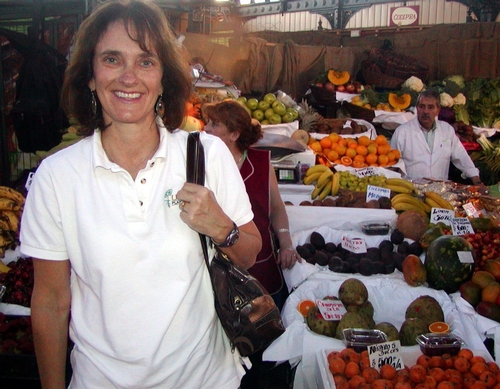Do you remember when store-bought produce was succulent every time you took a bite? Then you’re old – well, at least you’re not a kid. Today’s youth in America have a different experience with store-bought fruits and vegetables – sometimes they’re yummy and juicy, sometimes they taste like chalk.
What’s a mother to do?

"It’s a problem, because often you have only one window of opportunity to introduce a new fruit or vegetable to your child,” says Beth Mitcham, UC Cooperative Extension (CE) specialist with the UC Davis Department of Plant Sciences, director of the UC Davis Postharvest Technology Center and concerned mother. “And if the food doesn’t taste good, they aren’t going to like it.”
And if they don’t like it, they’re not going to eat it. That’s how it is for all of us, but new research by Mitcham and a broad group of experts may remedy the situation. Mitcham and her team recently received a nearly $6 million grant from the USDA for a project designed to improve the flavor quality of fruits and vegetables available to U.S. consumers and thereby increase their consumption.
A collaboration between UC Davis and the University of Florida, the project is co-directed by Mitcham and Jeff Brecht from the UF along with nearly 30 faculty members between the two institutions including CE Specialists Marita Cantwell, Trevor Suslow and Carlos Crisosto and Assistant Professor Florence Negre-Zakharov from the UC Davis Department of Plant Sciences. Other UC Davis faculty represent Agriculture and Resource Economics, Biological and Agricultural Engineering, Food Science and Technology, Viticulture and Enology and Public Health Sciences. More than twenty-five stakeholders from the produce industry are also on board.
As a postharvest technology specialist, Mitcham knows full well the challenges growers, packers and shippers face in getting crops from the field to the market in a condition shoppers will buy.
“Experience shows produce buyers rarely reject produce because it’s under-ripe,” Mitcham says. “But they will reject it if there is any bruising or decay.”
Most of us understand the problem – in broad strokes, at least. Take a tomato, for example. If we have the time, space and climate to grow them ourselves, the shelf life of our homegrown tomatoes would be the time it takes to pick one from the vine, walk into the house and slice it open. (Or the time it takes to bite into it right there in the yard. Yum.) If we’re harvesting tomatoes to deliver to a friend some distance away, we might want to pick them when they’re a little less ripe so they won’t get squished along the way.
Imagine, then, the challenge growers, shippers and retailers face delivering tomatoes to customers all across the globe year-round. Since shoppers eschew bruised produce, growers have to harvest them before they’re fully ripe, before their flavor has reached its full potential.
The team is looking at how they can alter that equation so our produce is more flavorful and still safe and economically viable for the industry. Their research will examine each step in the post-harvest chain asking questions like these:
- Can we slow the ripening process, so it can be picked later and still be fresh when it reaches the market? Is there new technology – in sorting, packing, shipping or anything else - that can help? How is flavor enhanced and inhibited during shipping and storing?
- If produce was riper during postharvest handling, would that affect our food safety risk? Would more pathogens survive?
- If produce was consistently flavorful, would consumers buy more?
“I think we can do a better job developing varieties with more flavor and improving postharvest performance so consumers can count on flavorful fruits an vegetables,” Mitcham says. “And I think this project will help.”
More information on this flavor project can be found in The Spring 2010 Leaflet.